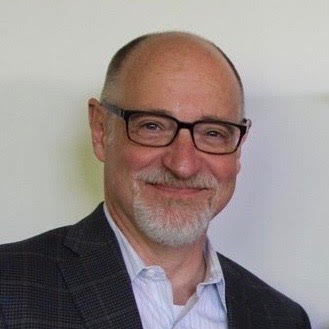Urban development: be careful what you ask for. You might just get it.

By Michael Mortimer
Standing in what remains of Villa 26 along Buenos Aires’ fetid Matanza River, one can’t help but wonder what ran through the minds of the 1,000 or so people who used to live here as their belongings—and their lives—were carted away to their new residences. Villa 26 is one of Buenos Aires' many informal settlements, which house more than 10% of the city’s population (over 300,000 people). After winning a court case against the city in 2008, further legal action over the next decade forced the relocation of Villa 26’s landless people to safer, healthier conditions in proper homes nearby. Their hovels and shacks were dutifully demolished to open up the 35-meter wide towpath, a protected zone running alongside all of Buenos Aires’ waterways. The victory was celebrated by residents and civil society alike as a step forward in the effort to provide suitable housing for BA’s slum dwellers. Huzzah!
But, is there a darker side to this?
Standing on the manicured lawn in the riverside park that has succeeded the ramshackle dwellings, one has to wonder about the fate of this place. Adjacent to the attractive greenway stand empty warehouses and factories. A few blocks farther away is the up-and-coming Barracas neighborhood, where the price per square meter is steadily climbing. It takes no effort at all to imagine the trendy bars, coffee shops, swank clothiers, restaurants, and art galleries that this little region could so easily attract; all of them anchored by new, posh riverside residences that could rise where the dilapidated factories now stand.
A perfect vision of gentrification
Imagine a narrative that goes something like this. One thousand of BA’s poorest are living along what will foreseeably become prime riverfront property; the kind that developers salivate over. But these people have been living precariously along the river—albeit illegally and without title—for decades. And, frankly, they like it there. What to do? Pushing them out is a political non-starter. Indeed, how about instead asking a socio-ecological consulting NGO to work with the locals? The NGO is well-equipped to help empower them to address the environmental harms they suffer as a result of living so close to the wretchedly polluted Matanza River. The Villa dwellers file suit against the government, demanding they be relocated in accordance with the constitution and the law. The government puts up a token legal fight, wanting the Villa to prevail. Which, of course, they then do. The government dutifully provides new, but low-cost housing away from the river. The slum is demolished. With the riverfront beautifully rehabilitated with benches, chess boards, and a promenade, the government waits. Waits for the dust to settle, for the prices in Barracas to rise, and for the eyes of the developers to turn towards this slice of gentrification heaven. Villa 26 essentially filed a lawsuit to evict themselves.
Who actually won?
Is that what happened? It would be nearly impossible to conclusively answer that question. But does it matter? Hasn’t everyone won? The NGO feels good about a job well done. The residents of Villa 26 have new homes removed from the river’s noxious effects. The government has both upgraded a slum and improved public access to the river. Developers will have a field day with what that the neighborhood can become (the government will enjoy those new tax revenues). And well-heeled Porteños (city-dwellers) will have a leafy new neighborhood to live, work, and play in.
The long-term effects of short-sighted decisions
But what of the social fabric of the “village” known as Villa 26? Have the support networks transferred intact to the new buildings? What is life like in a modern mid-rise building for people used to patios, gardens, and freedom? Will the youth turn to illegal activities as other opportunities vanish? How far away are the jobs that maintained the village’s livelihoods?
None of these questions are particular to Villa 26. They apply to slum upgrading projects around the world. What is unique is that an environmental threat was used as a hammer (and, in my speculative narrative, as a dubious means) by the disempowered and disenfranchised to “compel” government action. It was a unique lever for action, not common in slums in every country. But we might well consider whether it prompted action that may have ultimately not been in the interest of those very same citizens of Villa 26.

Michael Mortimer is the Founding Director of the Center for Leadership in Global Sustainability (CLiGS). He received his Ph.D. from the University of Montana and his law degree from the Pennsylvania State University. He teaches in the Center’s Global Issues in Environmental Sustainability course, and he has led students to more than a dozen countries. His research is published in Society and Natural Resources, Journal of Forestry, Environmental Impact Assessment Review, Environmental Management, Forest Policy and Economics, and other leading natural-resources journals. He is an avid photographer and traveler, having journeyed to more than fifty countries, camera in hand.


